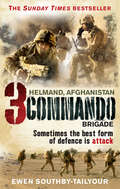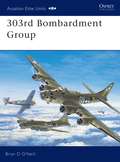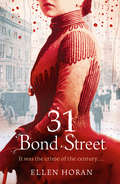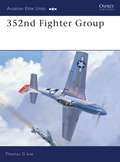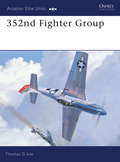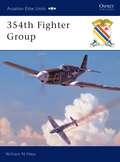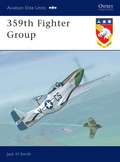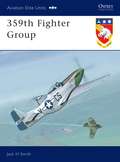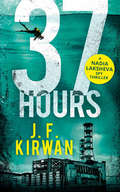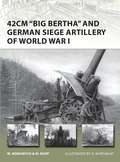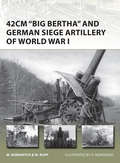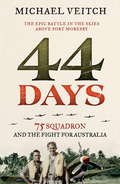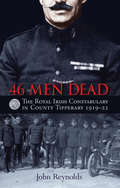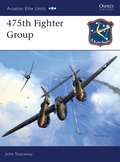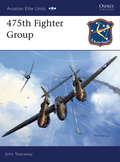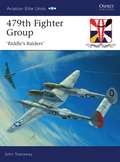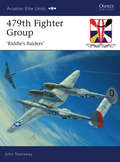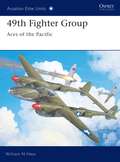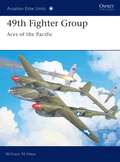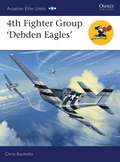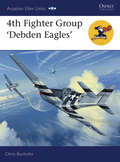- Table View
- List View
3 Commando Brigade: Helmand Assault
by Ewen Southby-Tailyour'The 3 Commando Brigade's six month deployment in Helmand Province was among the finest pieces of soldiering I have come across' General Sir Richard Dannett, Chief of General StaffIn October 2006, the Royal Marine Commandos took up their six month tour of duty in war-torn Helmand Province, southern Afghanistan - the toughest and hottest war zone on earth. After the tactical retreat of their predecessors, the Paras, the Marines knew they would have to take a different approach to have any chance of success. So they took the war to the enemy. Roving and aggressive, the Commandos forced the insurgent Taliban on to the back foot. As a result, they were involved in daily fire fights of an intensity not encountered by British troops since North Korea.3 Commando Brigade is a thrilling first-hand account of that dogged, heroic pursuit of the Taliban by the ordinary Marines, sailors and soldiers responsible. It is a story of valour, fortitude, supreme physical and mental fitness, and unrivalled professionalism under the most testing of circumstances. The account explodes from the first page with Operation Glacier, a graphic, no-holds-barred account of a Commando attack on a key Taliban base south of Garmsir - a battle that ends with the dramatic recovery of a Corporal's body from alongside the fort by Apache helicopters. From this opening salvo the action never lets up, offering a startlingly honest account of the war in Afghanistan as told by the junior officers, corporals and marines on the ground.
30 Years After: Issues and Representations of the Falklands War
by Carine Berbéri Monia O’Brien CastroThirty years after the Argentinian invasion of the Falkland Islands, the war remains a source of continued debate and analysis for politicians, historians and military strategists. Not only did the conflict provide a fascinating example of modern expeditionary warfare, but it also brought to the fore numerous questions regarding international law, sovereignty, the inheritance of colonialism, the influence of history on national policy and the use of military force for domestic political uses. As the essays in this collection show, the numerous facets of the Falklands War remain current today and have ramifications far beyond the South Atlantic. Covering issues ranging from military strategy to Anglo-American relations, international reactions and international law to media coverage, the volume provides an important overview of some of the complex issues involved, and offers a better understanding of this conflict and of the tensions which still exist today between London and Buenos Aires. Of interest to scholars of history, politics, international relations and defence studies, the volume provides a timely and forthright examination of a short but bloody episode of a kind that is likely to be seen with increasing frequency, as nations lay competing claims to disputed territories around the globe.
30 Years After: Issues and Representations of the Falklands War
by Carine Berbéri Monia O’Brien CastroThirty years after the Argentinian invasion of the Falkland Islands, the war remains a source of continued debate and analysis for politicians, historians and military strategists. Not only did the conflict provide a fascinating example of modern expeditionary warfare, but it also brought to the fore numerous questions regarding international law, sovereignty, the inheritance of colonialism, the influence of history on national policy and the use of military force for domestic political uses. As the essays in this collection show, the numerous facets of the Falklands War remain current today and have ramifications far beyond the South Atlantic. Covering issues ranging from military strategy to Anglo-American relations, international reactions and international law to media coverage, the volume provides an important overview of some of the complex issues involved, and offers a better understanding of this conflict and of the tensions which still exist today between London and Buenos Aires. Of interest to scholars of history, politics, international relations and defence studies, the volume provides a timely and forthright examination of a short but bloody episode of a kind that is likely to be seen with increasing frequency, as nations lay competing claims to disputed territories around the globe.
303rd Bombardment Group (Aviation Elite Units #11)
by Brian D O'NeillThe first title in the Elite Units series to deal with an American bombardment group, this title focuses on the 303rd BG, dubbed the 'Hells Angels.' One of the very first B-17 units assigned to the newly created Eighth Air Force in England in September 1942, the 303rd was in the vanguard of the daylight bombing campaign through to VE-Day. Awarded a Distinguished Unit Citation in January 1944, the 303rd also had two of its aircrewmen presented with the Medal of Honor, Americas ultimate military decoration. Brian O Neill brings the group's colourful combat history to life with a mix of first-hand accounts, raw statistics and concise mission narrative.
303rd Bombardment Group (Aviation Elite Units)
by Mark Styling Brian D O'NeillThe first title in the Elite Units series to deal with an American bombardment group, this title focuses on the 303rd BG, dubbed the 'Hells Angels.' One of the very first B-17 units assigned to the newly created Eighth Air Force in England in September 1942, the 303rd was in the vanguard of the daylight bombing campaign through to VE-Day. Awarded a Distinguished Unit Citation in January 1944, the 303rd also had two of its aircrewmen presented with the Medal of Honor, Americas ultimate military decoration. Brian O Neill brings the group's colourful combat history to life with a mix of first-hand accounts, raw statistics and concise mission narrative.
31 Bond Street: A Novel
by Ellen HoranBased on a true story, mystery and intrigue in pre-Civil War New York
352nd Fighter Group (Aviation Elite Units)
by Tom Ivie Tom TullisNicknamed the 'Bluenosed Bastards of Bodney' due to the garish all-blue noses of their P-51s, the 352nd FG was one of the most successful fighter groups in the Eighth Air Force. Credited with destroying almost 800 enemy aircraft between 1943 and 1945, the 352nd finished fourth in the ranking of all groups within VIII Fighter Command. Initially equipped with P-47s, the group transitioned to P-51s in the spring of 1944, and it was with the Mustang that its pilots enjoyed their greatest success. Numerous first-hand accounts, 55 newly commissioned artworks and 140+ photos complete this concise history of the 'Bluenosers'.
352nd Fighter Group (Aviation Elite Units #8)
by Tom Ivie Tom TullisNicknamed the 'Bluenosed Bastards of Bodney' due to the garish all-blue noses of their P-51s, the 352nd FG was one of the most successful fighter groups in the Eighth Air Force. Credited with destroying almost 800 enemy aircraft between 1943 and 1945, the 352nd finished fourth in the ranking of all groups within VIII Fighter Command. Initially equipped with P-47s, the group transitioned to P-51s in the spring of 1944, and it was with the Mustang that its pilots enjoyed their greatest success. Numerous first-hand accounts, 55 newly commissioned artworks and 140+ photos complete this concise history of the 'Bluenosers'.
354th Fighter Group (Aviation Elite Units)
by Chris Davey William N HessI think the success of the 354th as the leading group in the European theatre for aerial victories is due to several things. First was the initial training of the squadrons before deployment to England. Colonel Ken Martin nurtured the group from its infancy, and all the excellence that later showed through could be placed at his doorstep. Despite his youth, he knew how to foster teamwork and demand perfection in flying. There was nothing more important than getting the group off on the right foot. Second, our pilots were taught to fly mutual support, and practised it faithfully. There were no "hot" pilots in the 354th, only "excellent" pilots. Third, men like Glenn Eagleston gave advice and warnings about combat tactics and guarding one's tail. This prepared our pilots for lurking dangers, something the other groups may not have done.' Brigadier General James Howard, Commanding Officer of the 354th Fighter Group
354th Fighter Group (Aviation Elite Units #7)
by William N HessI think the success of the 354th as the leading group in the European theatre for aerial victories is due to several things. First was the initial training of the squadrons before deployment to England. Colonel Ken Martin nurtured the group from its infancy, and all the excellence that later showed through could be placed at his doorstep. Despite his youth, he knew how to foster teamwork and demand perfection in flying. There was nothing more important than getting the group off on the right foot. Second, our pilots were taught to fly mutual support, and practised it faithfully. There were no "hot" pilots in the 354th, only "excellent" pilots. Third, men like Glenn Eagleston gave advice and warnings about combat tactics and guarding one's tail. This prepared our pilots for lurking dangers, something the other groups may not have done.' Brigadier General James Howard, Commanding Officer of the 354th Fighter Group
359th Fighter Group (Aviation Elite Units #10)
by Jack H SmithNicknamed the 'Unicorns', the 359th FG was one of the last groups to arrive in the UK for service in the ETO with the Eighth Air Force. First seeing action on 13 December 1943, the group initially flew bomber escort sweeps in P-47s, before converting to the ubiquitous P-51 in March/April 1944. Throughout its time in the ETO, the 359th was credited with the destruction of 351 enemy aircraft destroyed between December 1943 and May 1945. The exploits of all 12 aces created by the group are detailed, along with the most significant missions flown. This book also discusses the various markings worn by the group's three squadrons, the 368th, 369th and 370th FSs
359th Fighter Group (Aviation Elite Units)
by Tom Tullis Jack H SmithNicknamed the 'Unicorns', the 359th FG was one of the last groups to arrive in the UK for service in the ETO with the Eighth Air Force. First seeing action on 13 December 1943, the group initially flew bomber escort sweeps in P-47s, before converting to the ubiquitous P-51 in March/April 1944. Throughout its time in the ETO, the 359th was credited with the destruction of 351 enemy aircraft destroyed between December 1943 and May 1945. The exploits of all 12 aces created by the group are detailed, along with the most significant missions flown. This book also discusses the various markings worn by the group's three squadrons, the 368th, 369th and 370th FSs
37 Hours (Nadia Laksheva Spy Thriller Series #2)
by J.F. Kirwan‘Nadia is a heroine readers are bound to fall hard for!’ – BestThrillers.com The only way to hunt down a killer is to become one…
42cm 'Big Bertha' and German Siege Artillery of World War I (New Vanguard)
by Henry Morshead Marc Romanych Martin RuppIn the early days of World War I, Germany unveiled a new weapon – the mobile 42cm (16.5 inch) M-Gerät howitzer. At the time, it was the largest artillery piece of its kind in the world and a closely guarded secret. When war broke out, two of the howitzers were rushed directly from the factory to Liege where they quickly destroyed two forts and compelled the fortress to surrender. After repeat performances at Namur, Maubeuge and Antwerp, German soldiers christened the howitzers 'Grosse' or 'Dicke Berta' (Fat or Big Bertha) after Bertha von Krupp, owner of the Krupp armament works that built the howitzers. The nickname was soon picked up by German press which triumphed the 42cm howitzers as Wunderwaffe (wonder weapons), and the legend of Big Bertha was born. This book details the design and development of German siege guns before and during World War I. Accompanying the text are many rare, never-before-published photographs of 'Big Bertha' and the other German siege guns. Colour illustrations depict the most important aspects of the German siege artillery.
42cm 'Big Bertha' and German Siege Artillery of World War I (New Vanguard #205)
by Marc Romanych Martin Rupp Mr Henry MorsheadIn the early days of World War I, Germany unveiled a new weapon – the mobile 42cm (16.5 inch) M-Gerät howitzer. At the time, it was the largest artillery piece of its kind in the world and a closely guarded secret. When war broke out, two of the howitzers were rushed directly from the factory to Liege where they quickly destroyed two forts and compelled the fortress to surrender. After repeat performances at Namur, Maubeuge and Antwerp, German soldiers christened the howitzers 'Grosse' or 'Dicke Berta' (Fat or Big Bertha) after Bertha von Krupp, owner of the Krupp armament works that built the howitzers. The nickname was soon picked up by German press which triumphed the 42cm howitzers as Wunderwaffe (wonder weapons), and the legend of Big Bertha was born. This book details the design and development of German siege guns before and during World War I. Accompanying the text are many rare, never-before-published photographs of 'Big Bertha' and the other German siege guns. Colour illustrations depict the most important aspects of the German siege artillery.
44 Days: 75 Squadron and the Fight for Australia
by Michael VeitchThe epic World War II story of Australia's 75 Squadron - and the 44 days when these brave and barely trained pilots fought alone against the Japanese.'Brilliantly researched and sympathetically told, 44 DAYS is more than just a fitting tribute to brave but overlooked heroes. It's also a top read.' **** ADELAIDE ADVERTISERIn March and April 1942, RAAF 75 Squadron bravely defended Port Moresby for 44 days when Australia truly stood alone against the Japanese. This group of raw young recruits scrambled ceaselessly in their Kittyhawk fighters to an extraordinary and heroic battle, the story of which has been left largely untold.The recruits had almost nothing going for them against the Japanese war machine, except for one extraordinary leader named John Jackson, a balding, tubby Queenslander - at 35 possibly the oldest fighter pilot in the world - who said little, led from the front, and who had absolutely no sense of physical fear.Time and time again this brave group were hurled into battle, against all odds and logic, and succeeded in mauling a far superior enemy - whilst also fighting against the air force hierarchy. After relentless attack, the squadron was almost wiped out by the time relief came, having succeeded in their mission - but also paying a terrible price.Michael Veitch, actor, presenter and critically acclaimed author, brings to life the incredible exploits and tragic sacrifices of this courageous squadron of Australian heroes.
46 Men Dead: The Royal Irish Constabulary in County Tipperary 1919–22
by John ReynoldsIN JANUARY 1919, AT SOLOHEADBEG IN TIPPERARY, two members of the Royal Irish Constabulary (RIC) were killed by the IRA. In the four bloody years that followed, nearly 500 RIC men were killed and hundreds more wounded. In Tipperary alone, 46 policemen were killed, making it one of most violent counties in Ireland. The popular image of the RIC is that they were the ‘eyes and ears of Dublin Castle’, an oppressive colonial force policing its fellow countrymen. But the truth is closer to home: many were Irishmen who joined because it was a secure job with prospects and a pension at the end of service. When confronted with a volunteer army of young and dedicated guerrilla fighters, it was unable to cope. When the conflict ended, the RIC was disbanded, not at the insistence of the Provisional Government, but of its own members. 46 Men Dead is a thought-provoking look at the grim reality of the conflict in Tipperary, a microcosm of the wider battle that was the War of Independence.
475th Fighter Group (Aviation Elite Units)
by Chris Davey John StanawayFormed with the best available fighter pilots in the Southwest Pacific, the 475th Fighter Group was the pet project of Fifth Air Force chief, General George C Kenney. From the time the group entered combat in August 1943 until the end of the war it was the fastest scoring group in the Pacific and remained one of the crack fighter units in the entire US Army Air Forces with a final total of some 550 credited aerial victories. Amongst its pilots were the leading American aces of all time, Dick Bong and Tom McGuire, with high-scoring pilots Danny Roberts and John Loisel also serving with the 475th. This book details these pilots, the planes they flew and the campaigns and battles they fought in including such famous names as Dobodura, the Huon Gulf, Oro Bay, Rabaul, Hollandia, the Philippines and Luzon.
475th Fighter Group (Aviation Elite Units #23)
by John Stanaway Mr Chris DaveyFormed with the best available fighter pilots in the Southwest Pacific, the 475th Fighter Group was the pet project of Fifth Air Force chief, General George C Kenney. From the time the group entered combat in August 1943 until the end of the war it was the fastest scoring group in the Pacific and remained one of the crack fighter units in the entire US Army Air Forces with a final total of some 550 credited aerial victories. Amongst its pilots were the leading American aces of all time, Dick Bong and Tom McGuire, with high-scoring pilots Danny Roberts and John Loisel also serving with the 475th. This book details these pilots, the planes they flew and the campaigns and battles they fought in including such famous names as Dobodura, the Huon Gulf, Oro Bay, Rabaul, Hollandia, the Philippines and Luzon.
479th Fighter Group: ‘Riddle’s Raiders’ (Aviation Elite Units)
by John Stanaway Chris DaveyFormed in October 1943, the 479th FG claimed an impressive history against the Luftwaffe during the final year of the war. Originally flying P-38s, the 479th's pilots had a fierce pride of arms. They earned a Presidential Distinguished Unit Citation in the late summer of 1944 and were also credited with the USAAF's first German jet kill in July 1944. Eventually transitioning to the P-51D in September 1944, the 479th excelled with the Mustang. The 479th FG was credited with scoring the last aerial victory claimed by the Eighth Air Force's VIII Fighter Command, on 25 April 1945. By VE-Day, 29 pilots flying in the group had earned "ace†? status.
479th Fighter Group: ‘Riddle’s Raiders’ (Aviation Elite Units #32)
by John Stanaway Mr Chris DaveyFormed in October 1943, the 479th FG claimed an impressive history against the Luftwaffe during the final year of the war. Originally flying P-38s, the 479th's pilots had a fierce pride of arms. They earned a Presidential Distinguished Unit Citation in the late summer of 1944 and were also credited with the USAAF's first German jet kill in July 1944. Eventually transitioning to the P-51D in September 1944, the 479th excelled with the Mustang. The 479th FG was credited with scoring the last aerial victory claimed by the Eighth Air Force's VIII Fighter Command, on 25 April 1945. By VE-Day, 29 pilots flying in the group had earned "ace†? status.
49th Fighter Group: Aces of the Pacific (Aviation Elite Units)
by Chris Davey William N HessThe 49th FG was sent to Australia in early 1942 to help stem the tide of Japanese conquest in Java. Too late to save the island, the group went into action in the defence of Darwin, Australia, where the Forty-Niners' handful of P-40E Warhawks were thrown into combat alongside survivors from the defeated forces that had fled from the Philippines and Java. This book assesses the outstanding performance of the 49th FG, pitted against superior Japanese forces. By VJ-Day the group had scored 668 aerial victories and won three Distinguished Unit Citations and ten campaign stars for its outstanding efforts.
49th Fighter Group: Aces of the Pacific (Aviation Elite Units #14)
by William N Hess Mr Chris DaveyThe 49th FG was sent to Australia in early 1942 to help stem the tide of Japanese conquest in Java. Too late to save the island, the group went into action in the defence of Darwin, Australia, where the Forty-Niners' handful of P-40E Warhawks were thrown into combat alongside survivors from the defeated forces that had fled from the Philippines and Java. This book assesses the outstanding performance of the 49th FG, pitted against superior Japanese forces. By VJ-Day the group had scored 668 aerial victories and won three Distinguished Unit Citations and ten campaign stars for its outstanding efforts.
4th Fighter Group: Debden Eagles (Aviation Elite Units)
by Chris Davey Chris BucholtzFormed around a nucleus of pilots already seasoned by their experience as volunteers in the RAF's Eagle Squadrons, the 4th Fighter Group was established in England in October 1942. Initially flying Spitfires, the Debden Eagles went on to fly the P-47 and P-51, becoming, in July 1943, the first Eighth Air Force fighter group to penetrate German air space. The group's record of 583 air and 469 ground victories was unmatched in the Eighth Air Force, and the group produced a cast of characters that included legendary aces Don Blakeslee, Pierce McKennon, "Kid†? Hofer, Duane Beeson, Steve Pisanos and Howard Hively. Involved in the D-Day landings, Operation Market Garden, the Battle of the Bulge and the crossing of the Rhine, the group's achievements came at a high price, with a 42 percent casualty rate. Packed with first-hand accounts, detailed aircraft profiles and full combat histories, this book is an intriguing insight into the best-known American fighter unit in World War II
4th Fighter Group: Debden Eagles (Aviation Elite Units #30)
by Chris Davey Chris BucholtzFormed around a nucleus of pilots already seasoned by their experience as volunteers in the RAF's Eagle Squadrons, the 4th Fighter Group was established in England in October 1942. Initially flying Spitfires, the Debden Eagles went on to fly the P-47 and P-51, becoming, in July 1943, the first Eighth Air Force fighter group to penetrate German air space. The group's record of 583 air and 469 ground victories was unmatched in the Eighth Air Force, and the group produced a cast of characters that included legendary aces Don Blakeslee, Pierce McKennon, "Kid†? Hofer, Duane Beeson, Steve Pisanos and Howard Hively.Involved in the D-Day landings, Operation Market Garden, the Battle of the Bulge and the crossing of the Rhine, the group's achievements came at a high price, with a 42 percent casualty rate. Packed with first-hand accounts, detailed aircraft profiles and full combat histories, this book is an intriguing insight into the best-known American fighter unit in World War II.
